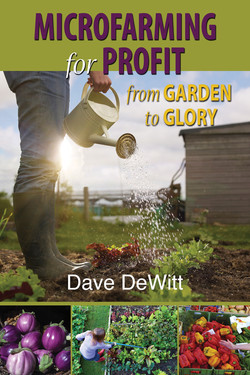Читать книгу Microfarming for Profit - Dave DeWitt - Страница 15
На сайте Литреса книга снята с продажи.
ОглавлениеCHILE PEPPERS
About the Crop
Chile peppers, like tomatoes, are fruits of the large Solanaceae or nightshade family, which also includes potatoes, tobacco, tomatillos, petunias, and the poisonous mandrake, belladonna, and datura, or jimsonweed. Chiles have their own “poison,” namely their active ingredient, capsaicin, which seems to have evolved to protect the seeds from consumption by mammals, whose digestive systems destroy their seeds. As a spice, chiles are second in popularity only to black pepper, and as a food, they heat up cuisines all around the world, from Mexico to India to Hungary to Thailand to China. In fact, India is the number one producer of dried chiles and China the leader in the cultivation of fresh ones. Fresh chiles of some sort are commonly available nearly everywhere all year long in the U.S. these days, so if they’re going to fit into a microfarm, you’re going to have to grow the more unusual ones.
Pros
Growing superhot chile peppers outdoors during the summer can produce valuable pods and seeds and various value-added products like powders and sauces. Although it is possible to grow chiles under artificial light or in greenhouses, the yields are usually small and these cultivation methods are not recommended. So, like tomatoes, they are a summer crop. Successful chile microfarmers focus on the superhot chiles that approach a heat level of one million Scoville Heat Units (compare the jalapeño at about 4,000 SHU), or on raising bedding plants for sale to gardeners. See the stories on Marlin Bensinger and Cross Country Nurseries in Part 2. Chiles are about as easy to grow as tomatoes, and there are culinary varieties and ornamental ones, but the microfarmer should focus on growing either the superhots or culinary varieties that are in high demand at the time. If you live in an area that produces a lot of chile peppers, like I do, it just doesn’t make any sense to grow the same varieties that the farmers with fifty acres or more are growing—they will beat you every time.
‘Bhut Jolokia’ superhot pods on the plant.
Photo by Harald Zoschke.
Cons
